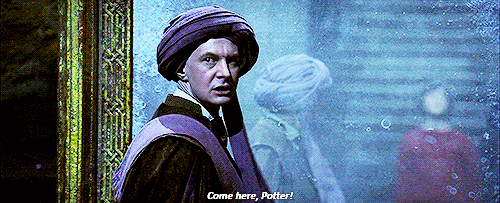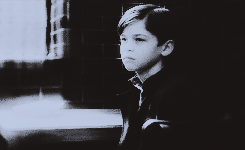Filling in Plot Holes
To the delight of Potter fans everywhere, the first installment of J.K. Rowling’s “History of Magic in North America” series rolled out on Pottermore yesterday morning. We learned a great deal about Native American culture in the wizarding world and that the biggest difference between Native American wizards and their European counterpart concerns wand usage; Native Americans, skilled Animagi and potion-makers, didn’t use wands between the 14th and 17th centuries.
There’s been a lot of debate about wandless magic. Some people even name instances of wandless magic throughout the series as plot holes, particularly Quirrell’s usage at the end of Sorcerer’s Stone.
Rowling explained the origin and purpose of wands in the new material on Pottermore:
The magic wand originated in Europe. Wands channel magic so as to make its effects both more precise and more powerful, although it is generally held to be a mark of the very greatest witches and wizards that they have also been able to produce wandless magic of a very high quality.
This isn’t the first time Rowling has explained wandless magic, but this information explains the instances we’ve seen throughout the series. Even if Quirrell wasn’t a very powerful wizard on his own, having Voldemort on the back of his head probably increased his magical abilities substantially.
Following the publishing of the material on Pottermore, JKR answered multiple questions on Twitter concerning the nature of wandless magic.
.@ReadyFeddie As children, wizards often produce accidental magic when they feel strong emotion. Wands help control and channel this power.
— J.K. Rowling (@jk_rowling) March 8, 2016
Voldemort’s immense power becomes clearer in light of this information; before he even knew he was a wizard, Voldemort was capable of using wandless magic to terrorize his peers at the orphanage. Young Riddle used magic precisely and with intention, calculating how he could inflict harm upon his fellow orphans.
This isn’t the first time we see a child using wandless magic; Harry Potter made several strange things happen before he even crossed the threshold of the wizarding world. During Sorcerer’s Stone, he made the glass in the boa constrictor’s exhibit disappear. He didn’t need his wand to turn his teacher’s wig blue, jump up onto the school roof, shrink his horrible sweater, regrow his hair overnight, or inflate Aunt Marge during Prisoner of Azkaban. Although he didn’t do any of this intentionally, I think it speaks to his power that he got himself out of so many uncomfortable situations.
Knowing that wandless magic is possible also clears up some discrepancies between the books and the films. The films have often been criticized for straying from the books, but now their frequent use of wandless magic makes more sense. Voldemort and Dumbledore can frequently be seen using wandless magic, and both are incredibly powerful wizards.
While it cleared some things up, this information left me with a pretty big question about the nature of wizards and wands: What exactly constitutes wandless magic? When Harry and Dudley were pursued by Dementors during Order of the Phoenix, Harry was able to cast the Wand-Lighting Charm and light up his wand without actually touching it. This suggests that the ability to utilize a wand’s channeling capabilities doesn’t depend on being in physical contact with the wand itself.
During Harry’s first Quidditch match in Sorcerer’s Stone, neither Quirrell nor Snape appeared to be holding onto his wand while he muttered his curses and counter-curses; however, both probably had their wands in their robes. How would this affect their magical precision and power? Does the proximity of their wands affect the spells they cast or is this connection limited to Harry and his wand?
It’s amazing that every time J.K. Rowling answers our questions, more always appear.
How do you think the wizard to wand connection works? Does the proximity of a wizard’s wand aid in their spellcasting abilities, or is wandless magic a separate skill altogether?


